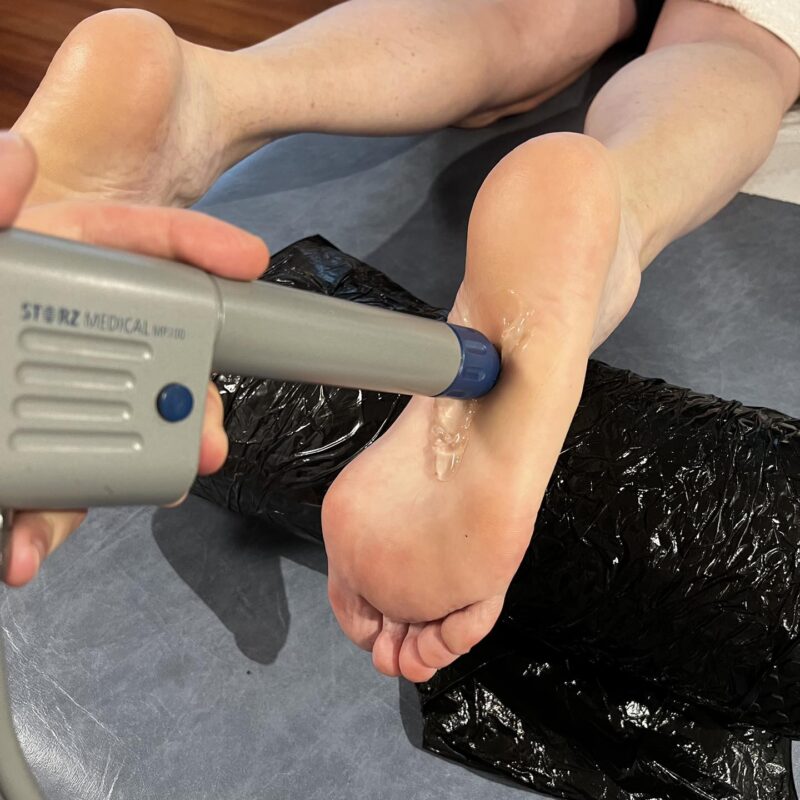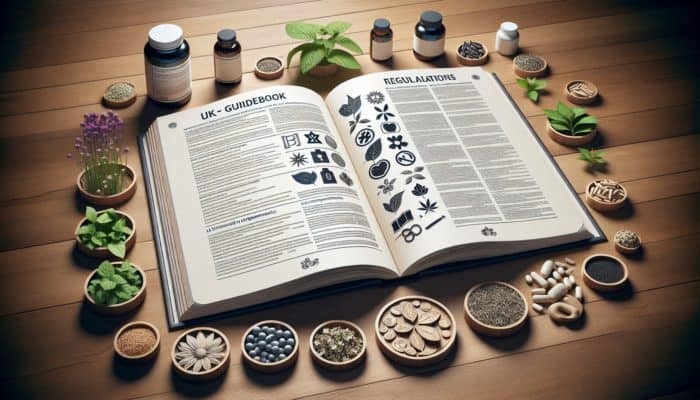Treatment Options for Incontinence Management
Incontinence is a widespread medical disease that impacts many individuals worldwide. It describes the involuntary passage of bodily fluids, such as urine or excrement, which can substantially negatively affect a person's overall well-being. The four primary categories of incontinence are stress, urge, overflow, and functional incontinence.
Every category has unique causes and symptoms. Stress incontinence is the involuntary leakage of pee that happens when the bladder is subjected to pressure. This can occur during coughing, sneezing, laughing, or exercising.
Urge incontinence is defined as a sudden and overwhelming urge to urinate, followed by the involuntary leakage of urine. When the bladder does not empty, overflow incontinence results in frequent or continuous pee dribbling. Functional incontinence commonly occurs when a person cannot reach the toilet promptly due to physical or cognitive limitations.
The aetiology of incontinence varies depending on the type. Stress incontinence often occurs due to weakening pelvic floor muscles, whereas urge incontinence may be associated with an overactive bladder or nerve impairment. Additional possible factors are urinary tract infections, constipation, specific drugs, and neurological diseases.
The symptoms of incontinence vary from slight leaking to total loss of bladder or bowel control. Individuals experiencing symptoms of incontinence should prioritise seeking medical consultation to identify the root cause and explore suitable treatment options.
Key Takeaways
- Incontinence can be caused by various factors, including weakened pelvic floor muscles, nerve damage, and certain medical conditions.
- Lifestyle changes such as maintaining a healthy weight, avoiding bladder irritants, and practising bladder training can help manage incontinence symptoms.
- Medications like anticholinergics and mirabegron can be prescribed to help control overactive bladder and reduce incontinence episodes.
- Pelvic floor exercises, also known as Kegels, and physical therapy can strengthen the pelvic floor muscles and improve bladder control.
- Surgical options, such as sling procedures and bladder neck suspension, may be considered for severe cases of incontinence that do not respond to other treatments.
 Lifestyle Changes and Behavioral Therapy for Incontinence
Lifestyle Changes and Behavioral Therapy for Incontinence
Dietary Adjustments
Making simple adjustments to daily habits can significantly reduce the frequency and severity of incontinence episodes. For example, reducing fluid intake, especially before bedtime, can help minimise the need to urinate during the night. Avoiding caffeine and alcohol, which can irritate the bladder and increase urine production, may also be beneficial.
Physical Activity and Weight Management
In addition to dietary changes, maintaining a healthy weight and engaging in regular physical activity can help strengthen the pelvic floor muscles and improve bladder control. Quitting smoking is also important, as smoking can contribute to coughing and bladder irritation, which can exacerbate incontinence symptoms.
Behavioural Therapy Techniques
Behavioural therapy techniques, such as bladder training and scheduled voiding, can help individuals regain control over their bladder function. These techniques involve gradually increasing the time between bathroom visits and learning to recognise and respond to the body's signals for urination. Furthermore, practising good toilet habits, such as taking enough time to empty the bladder and using relaxation techniques to reduce urgency, can also be helpful.
Additional Therapies
In some cases, biofeedback therapy or electrical stimulation may be recommended to help individuals gain better control over their pelvic floor muscles. By implementing these lifestyle changes and behavioural therapy techniques, many individuals with incontinence can experience significant improvement in their symptoms and regain confidence in their daily activities.
Medication Options for Managing Incontinence
Aside from making adjustments to one's lifestyle and undergoing behavioural therapy, other pharmacological choices can be used to manage incontinence effectively. The choice of medication provided will be contingent upon the incontinence's precise classification and underlying aetiology. Anticholinergic drugs are frequently employed to manage urge incontinence by inducing relaxation in the muscles of the bladder and diminishing the frequency of contractions.
These drugs can alleviate the abrupt and severe need to urinate, indicative of urge incontinence. Mirabegron is a medicine that can be administered to treat incontinence. It relaxes the bladder muscle and enhances its ability to retain urine. This medicine is commonly used for the treatment of symptoms associated with an overactive bladder, for example, the sudden and consistent urge to pee.
Topical oestrogen therapy may be prescribed for persons experiencing stress incontinence to enhance the resilience and flexibility of the tissues in the urethra and vaginal region. Tricyclic antidepressants or other drugs that impact nerve signals may be used in certain instances to assist in managing symptoms of incontinence. Individuals who are exploring drug choices for incontinence should consult a healthcare expert to establish the most suitable treatment based on their specific symptoms and medical history.
Although drugs can effectively manage incontinence for certain persons, it is essential to scrutinise their potential adverse effects.
 Pelvic Floor Exercises and Physical Therapy for Incontinence
Pelvic Floor Exercises and Physical Therapy for Incontinence
Pelvic floor exercises, usually Kegel exercises, are essential to physical therapy for managing incontinence. These exercises entail contracting and relaxing the muscles in the pelvic floor to enhance strength and control. By fortifying these muscles, individuals can improve their ability to support the bladder and bowel, decreasing the likelihood of leakage and gaining control and independence.
Pelvic floor exercises are especially advantageous for patients experiencing stress incontinence, as they enhance the capacity to retain urine during activities that exert pressure on the bladder. Physical therapy for the pelvic floor may incorporate several modalities, including biofeedback. Biofeedback employs sensors to offer visual or aural cues regarding muscle activity, aiding individuals in acquiring the skill to contract and release their pelvic floor muscles effectively by applying gentle electrical pulses to the area. It is possible to enhance pelvic floor muscle strength with electrical stimulation.
Specialised physical therapists in pelvic floor rehabilitation collaborate with patients to create customised training regimens tailored to their unique requirements and objectives. These programs may also incorporate stretches and strengthening exercises targeting additional muscle groups that support pelvic floor function. Engaging in physical therapy for incontinence can enhance patients' muscular strength and coordination, resulting in enhanced bladder control and fewer incontinence symptoms.
Surgical Options for Incontinence Treatment
Surgical interventions may be explored for those with severe or persistent incontinence that does not improve with conservative therapy. Various surgical interventions are available to treat different forms of incontinence, with each technique targeting the root cause of the disease. A frequently used surgical treatment for stress incontinence is the sling operation. This procedure entails placing a supporting sling over the urethra to offer extra support and prevent leakage when engaging in activities that strain the bladder.
A bladder neck suspension is an additional surgical technique used to treat stress incontinence. It involves attaching the neck of the bladder to adjacent structures to enhance the regulation of urine flow. For those with symptoms of an overactive bladder or urge incontinence, sacral neuromodulation may be recommended. This treatment involves placing a miniature device near the sacral nerves to regulate nerve signals associated with bladder function, diminishing the urgency and frequency of urinating.
Occasionally, surgical interventions for incontinence may involve procedures to rectify anatomical anomalies or treat underlying disorders that contribute to symptoms. Before making a decision, individuals contemplating surgical intervention for incontinence should thoroughly discuss the prospective hazards and advantages with a healthcare professional and thoughtfully evaluate their alternatives.
Incontinence Products and Devices for Management
Absorbent Products
Disposable absorbent products, such as pads, liners, and adult diapers, are commonly used to manage urinary or faecal incontinence. These products come in various sizes and absorbency levels to meet individual needs. Reusable absorbent underwear and protective garments are also available for those looking for more sustainable options.
Assistive Devices
For individuals with mobility limitations or difficulty reaching the toilet in time, portable urinals or bedpans may help manage urinary incontinence. Male external catheters and female urinary collection devices are also available for individuals who require assistance with urinary drainage.
Skin and Odor Care
In addition to absorbent products, skin care products such as barrier creams and cleansing wipes can help prevent irritation and discomfort associated with frequent exposure to urine or faeces. Odour control products, such as deodorising sprays or pouches, are also available to help manage unpleasant odours associated with incontinence.
 Combining Therapy Options for Effective Incontinence Management
Combining Therapy Options for Effective Incontinence Management
A combination of therapy approaches is often required for effective incontinence management. For instance, a person with stress incontinence can find relief by engaging in pelvic floor exercises to fortify the muscles that support the bladder. Additionally, lifestyle adjustments such as managing weight and making food alterations can help alleviate strain on the bladder. Similarly, a person with urge incontinence may find relief through pharmacotherapy to decrease the urgency and frequency of urine. Behavioural therapy strategies like bladder training can help regain control over bladder function.
Individuals with incontinence caused by several factors or complex conditions may require a comprehensive approach that incorporates various therapy approaches to control their symptoms effectively. This comprehensive care is provided by a healthcare team comprising physicians, physical therapists, occupational therapists, and other specialists. They provide individualised care based on their requirements to make people feel supported and cared for. By integrating several therapeutic approaches, persons can achieve an enhanced quality of life and restore their self-assurance in everyday activities without apprehension or unease related to incontinence.
Individuals suffering from incontinence should see healthcare professionals for assistance with the various treatment choices and to create a customised strategy that caters to their specific needs and objectives.
FAQs
What is incontinence therapy?
Incontinence therapy refers to the various treatments and interventions to manage and improve urinary or faecal incontinence symptoms. These therapies can include lifestyle changes, pelvic floor exercises, medication, medical devices, and, in some cases, surgery.
What are the common causes of incontinence?
Incontinence can be caused by a variety of factors, including weakened pelvic floor muscles, nerve damage, urinary tract infections, certain medications, and underlying medical conditions such as diabetes, Parkinson's disease, or prostate issues in men.
What are the different types of incontinence therapy?
Incontinence therapy can include pelvic floor muscle exercises (Kegel exercises), bladder training, dietary and fluid management, medication, biofeedback, electrical stimulation, and, in some cases, surgical interventions such as sling procedures or artificial urinary sphincter implants.
How effective is incontinence therapy?
The effectiveness of incontinence therapy can vary depending on the individual and the underlying cause. Many people experience significant improvement in their symptoms with the appropriate therapy, while others may require a combination of treatments to achieve the desired results.
Does insurance cover incontinence therapy?
In many cases, incontinence therapy and related treatments are covered by health insurance. However, coverage can vary depending on the specific insurance plan and the recommended therapy type. It's important to check with your insurance provider to understand what is covered and what out-of-pocket costs may be involved.
Brought To You By:
References
Tips for Dealing with Urinary Incontinence (For Men) | OncoLink. https://www.oncolink.org/support/practical-and-emotional/physical-concerns/tips-for-dealing-with-urinary-incontinence-for-men
Understanding Incontinence and Its Effects – P Homecare. https://www.phomecare.com.au/2023/05/16/understanding-incontinence-and-its-effects/


























64 Comments
Your breakdown of the different types of incontinence is so helpful; it really illuminates the complexity of the condition. I think what often gets overlooked in discussions about incontinence is the psychological toll it can take on individuals. Many people affected feel embarrassed or anxious about their condition, which can lead to avoidance of social situations or even withdrawal from activities they once enjoyed. It’s sad because involuntary leakage is such a common issue, yet it still carries a stigma that can be hard to shake.
You’ve touched on an important aspect of incontinence that often doesn’t get enough attention. The emotional and psychological impacts can be significant. Many people do feel isolated or embarrassed, which can create a cycle that keeps them from seeking help or having open conversations about the condition.
“Discover insights that can enhance your knowledge—click here!”
https://mcrtherapies.co.uk/ezi
You’ve raised such a key point about the emotional and psychological effects of incontinence. It’s something that often lurks in the background of discussions about the condition, and I find it especially concerning how isolation can compound feelings of embarrassment. When people feel they can’t talk openly about it, it not only affects their mental health but can also hinder them from finding effective solutions or support.
You’ve touched on a critical aspect of incontinence that really resonates with me. The emotional and psychological effects often feel like an unspoken part of the conversation, don’t they? When people find themselves grappling with this condition, it’s inevitable that a cloud of embarrassment hangs overhead. It’s like trying to manage an issue while also juggling the weight of stigma and isolation—really tough.
I completely agree with you about the emotional and psychological effects of incontinence. It’s interesting how the conversation tends to focus so heavily on the physical aspects, while the mental toll often gets brushed aside. That cloud of embarrassment can feel suffocating, and it’s something many people don’t talk about openly.
You really hit the nail on the head about the emotional side of incontinence. It’s surprising how often that gets sidelined. The feelings of embarrassment and isolation can be incredibly heavy. It’s not just a physical issue; it can change how people see themselves and how they interact in social situations.
“You’re absolutely right—the emotional side is so often overlooked. If you’re looking for more support and insights on navigating these challenges, you might find this resource helpful.”
https://mcrtherapies.co.uk/ig
You hit the nail on the head with that observation about the emotional weight of incontinence. It’s amazing how something so physical can feel so isolating. It’s a bit like being the only person at a party who doesn’t know the dance moves—everyone else is grooving along, and you’re just trying not to trip over your own feet.
“Absolutely, the emotional toll is significant, and I encourage anyone feeling this way to explore resources that offer support and solutions. Check out this link for more information on how to find help and connect with others who understand your experience.”
https://mcrtherapies.co.uk/fb
You’re right; the emotional and psychological impacts of incontinence are often overlooked. It’s easy to see how feelings of isolation and embarrassment can set in, especially in a society that doesn’t always provide a safe space for these discussions. I’ve noticed that this silence can prevent many from seeking the help they need, creating a real barrier to both emotional and physical health.
You’ve touched on an important aspect of the conversation around incontinence that doesn’t always get the spotlight it deserves. The emotional and psychological impacts can be profound, often leaving people feeling trapped in their own experiences. It’s not just about the physical symptoms; it’s the weight of isolation and embarrassment that can really hinder someone’s quality of life.
You bring up such a vital point about the emotional and psychological aspects of incontinence. It’s easy to overlook how isolation and embarrassment can influence someone’s willingness to seek help. This aspect often goes unaddressed in conversations about incontinence, which can leave many feeling trapped in their situation.
It’s heartening to see how this topic resonates with people. The emotional burden of incontinence can be heavy, and you’re right—many individuals feel isolated because of it. It becomes a cycle: feeling embarrassed leads to withdrawal, which only heightens those feelings of being trapped.
You’ve touched on such an important aspect of incontinence that often flies under the radar. It’s true—many people feel isolated and embarrassed, which can create a barrier to seeking the help they need. It’s interesting how these feelings can form a cycle; the more someone feels alone in their struggle, the less likely they are to reach out for support or even talk about it openly.
You’ve raised some insightful points about incontinence and its often-overlooked emotional and psychological effects. It’s really true that feelings of isolation and embarrassment can not only stem from the condition itself but also from societal perceptions. Many people may feel like they’re facing it alone, which can prevent them from reaching out for the support they need.
You’ve touched on such an important aspect of incontinence that often gets swept under the rug. The emotional and psychological challenges that come with this condition can be just as impactful as the physical symptoms. Many individuals find themselves caught in a difficult cycle where embarrassment leads to isolation, and isolation, in turn, intensifies feelings of anxiety or depression.
“Unlock a world of possibilities and enrich your journey by exploring this insightful resource that offers valuable perspectives and transformative ideas—click here to begin your discovery.”
https://mcrtherapies.co.uk/ezi
You’ve touched on such an important aspect of incontinence that often gets swept under the rug. The emotional and psychological challenges that come with this condition can be just as impactful as the physical symptoms. It’s true that the stigma surrounding incontinence often leaves individuals feeling alone, which can lead to a vicious cycle of embarrassment and isolation. It’s surprising how many people don’t realize how deeply these feelings can affect someone’s overall wellness.
You’ve really pinpointed a critical part of the conversation. The emotional toll of incontinence often goes unnoticed, and it’s important to highlight how much the stigma can amplify feelings of loneliness and self-doubt. Many don’t consider how this condition affects daily life beyond the physical, like relationships, work, and even just enjoying social activities.
You’ve really highlighted a key issue. The emotional toll of incontinence really does run deep, and it’s not just about the physical challenges; it seeps into every facet of life. The stigma surrounding it can create a barrier that makes it difficult for many to seek help or even connect with others who might understand their struggles.
You’ve really captured the emotional toll of incontinence well. It’s interesting how often we overlook the psychological aspect of health conditions like this, focusing primarily on the physical symptoms. The stigma, as you mentioned, can feel isolating. It prevents many from opening up to friends and family, or even healthcare professionals. It’s disheartening how the fear of judgment can outweigh the need for support.
I completely agree; the emotional impact of incontinence is often overlooked, and I recently came across some insightful information on how breath gas chromatography can play a role in understanding gut health, which might shed light on these connected struggles.
‘Breath Gas Chromatography for Better Gut Health’
https://mcrtherapies.co.uk/breath-gas-chromatography-for-better-gut-health/.
You’ve really hit on an important point about how we often overlook the psychological aspect of health conditions like incontinence. It’s true that the stigma can be incredibly isolating, making it difficult for people to open up. I find it fascinating how our society tends to focus on the visible symptoms rather than the emotional toll they can take. Opening up about these struggles is essential, not just for individual well-being but also for fostering greater understanding and compassion around these topics.
You’ve really highlighted a crucial point that often goes unnoticed. The emotional and psychological fallout from incontinence can be overwhelming, and it’s alarming how many people feel they have to face it alone. It’s interesting to consider how societal attitudes contribute to this feeling of isolation. There’s still a stigma around many health issues, which can make it even harder for individuals to reach out or seek support.
You’re spot on about the emotional and psychological side of incontinence. It really is a complex issue that many people overlook. The cycle of embarrassment and isolation you mentioned is so prevalent, yet it’s something that doesn’t often get the attention it deserves. For many, just talking about it can feel daunting, which only adds to that feeling of being alone in their struggle.
You’ve hit the nail on the head. Incontinence does come with a side of psychological baggage that hardly gets the spotlight it deserves. It’s like sneezing in a quiet room—the sound may be minor, but the embarrassment can echo. A lot of folks end up playing a game of social hide-and-seek because they’d rather dodge potential “oops” moments than risk a little uncomfortable laughter.
“Click here for a giggle-worthy surprise—your daily dose of ‘wow’ awaits!”
https://mcrtherapies.co.uk/fb
It’s interesting how incontinence is often a taboo topic, yet it affects so many people. I remember discussing it with a family member who had a tough time accepting it, mainly due to societal stigmas. The part about functional incontinence really struck a chord, as it makes you think about how important accessible bathroom facilities are, especially for the elderly or those with disabilities.
Incontinence is a topic that often goes unspoken, yet it significantly affects many people’s lives, as your post highlights. The categorization of incontinence into stress, urge, overflow, and functional offers a clear framework for understanding its diverse manifestations and impacts. I find it particularly interesting how these types often intersect with different aspects of a person’s daily life, influencing both physical activity and emotional wellbeing.
You’ve touched on a crucial point. The intersection of incontinence with daily life is often overlooked, but its impact can ripple through everything from social interactions to self-esteem. Stress incontinence during a workout or urge incontinence while trying to enjoy a movie night can create significant barriers. And it’s not just about the physical aspect; the emotional toll can lead to isolation or anxiety, making it even more important to foster open conversations around this topic.
“Discover the insights that could change your perspective!”
https://mcrtherapies.co.uk/yt
You bring up such an important aspect of incontinence that many people might not think about unless they’ve experienced it firsthand. It’s fascinating—and a bit disheartening—how something like incontinence can influence not just physical activities but also our mental and emotional well-being.
It’s interesting how our daily experiences can be shaped by topics like incontinence; I recently came across some insights that really shed light on its broader implications.
‘Homepage’
https://mcrtherapies.co.uk/.
You raise a really insightful point about the multifaceted impact of incontinence—it’s definitely one of those topics that doesn’t get as much attention as it deserves. From my perspective, it often feels like a hidden challenge that can influence not just our physical activities but also our sense of self and social interactions.
I recently explored a topic that ties into that discussion—how shockwave therapy can surprisingly play a role in addressing not just physical discomfort but also the emotional challenges tied to conditions like incontinence.
‘Shockwave Therapy (ESWT)’
https://mcrtherapies.co.uk/product/shockwave-therapy-eswt/.
You make such an important observation about the often-overlooked dimensions of incontinence. It really is a layered issue that goes beyond the physical symptoms, intertwining with our identity and social lives. Many people might not realize how deeply it can affect personal relationships and even day-to-day activities.
I completely resonate with your thoughts on incontinence as a hidden challenge. It often feels like something that people face in silence, which can exacerbate feelings of isolation or anxiety. It’s interesting how conditions like these impact not just our daily activities but also our identity and how we relate to others.
I came across an article that delves into overactive bladder syndrome, which also touches on the broader implications of incontinence—definitely worth a read for anyone looking to understand this often-overlooked topic better.
‘Overactive Bladder Syndrome: What You Need To Know’
https://mcrtherapies.co.uk/overactive-bladder-syndrome-what-you-need-to-know/.
You bring up some really important points about incontinence and its intersection with daily life. It’s striking how often this issue is sidelined in conversations about health, despite the profound impact it can have on emotional well-being and social engagement. The interplay between different types of incontinence—like stress and urge—often complicates things further, making it challenging for people to navigate their day-to-day activities and relationships.
I recently came across an interesting piece on shockwave therapy, which seems to offer some promising insights into managing issues that, like incontinence, can impact both physical health and emotional wellbeing.
‘Shockwave Therapy (ESWT)’
https://mcrtherapies.co.uk/product/shockwave-therapy-eswt/.
You’ve touched on a really vital aspect of incontinence that doesn’t get enough airtime. It’s so true how it can affect not just the physical side of things, but the emotional impacts can be just as profound. Many people might not realize how it can subtly influence relationships and even day-to-day choices, from what to wear to whether one feels comfortable going out.
You’ve nailed it—talking about incontinence can feel like navigating a minefield, yet it touches so many lives in ways we don’t often realize. The types you mentioned definitely play a role in everyday experiences. For instance, someone dealing with urge incontinence might skip a social event just to avoid the stress that comes with needing quick access to a bathroom. It’s these little choices that can really shape someone’s life and how they view themselves.
This overview of incontinence and its various types is crucial, as it highlights not only the complexity of this condition but also the need for tailored management strategies. I’ve seen firsthand how incontinence affects daily life, both in a clinical setting and through friends and family members. It’s often invisible to outsiders, yet those who experience it deal with significant emotional and physical challenges.
You’ve touched on something that resonates deeply with many, and it’s encouraging to see this conversation unfold. The daily reality of living with incontinence can often lead to feelings of isolation, since, as you mentioned, it’s not something people readily spot. It’s fascinating to hear how your encounters in clinical settings and personal circles have shaped your understanding of the condition.
“To explore tailored management strategies and resources that can make a real difference, check out this helpful guide.”
https://mcrtherapies.co.uk/ezi
You’ve touched on some essential points regarding incontinence and how it quietly infiltrates so many aspects of daily life. It’s one of those conditions that often goes unspoken, isn’t it? The emotional toll it takes on individuals can be just as heavy as the physical symptoms. Many people, from those experiencing incontinence to their families, grapple with feelings of frustration, embarrassment, isolation, or even depression.
Thank you for sharing your perspective! For those looking for more insights and resources on managing incontinence, I invite you to explore this helpful guide.
https://mcrtherapies.co.uk/fb
This is a crucial topic, as incontinence remains stigmatized despite its prevalence. Understanding the various types—stress, urge, overflow, and functional—can guide individuals towards appropriate management strategies. Personally, I’ve observed that many people are hesitant to discuss their experiences with incontinence, often due to misconceptions about its causes and treatment.
You’ve pointed out an essential aspect of this discussion—how prevalent incontinence is yet how often it remains unspoken. It’s frustrating to see so many people carry the burden of stigma, especially when the condition can arise from numerous causes and is hardly a rarity. The hesitance to talk about it really highlights a broader issue with how society views bodily functions.
“Discover the truth behind the headlines—if you dare.”
https://mcrtherapies.co.uk/ezi
You’ve touched on such an important aspect of this conversation. The stigma surrounding incontinence plays a significant role in how individuals navigate their experiences and seek help. When we think about the different types—stress, urge, overflow, and functional—it’s clear that addressing incontinence is not just about understanding the condition itself but also about opening a door to genuine discussion and support.
“Discover a pathway to transformation and inspiration that could reshape your perspective—click here to embark on a journey of growth and enlightenment.”
https://mcrtherapies.co.uk/ig
You hit the nail on the head about the stigma surrounding incontinence. It’s one of those topics that can make conversations awkward, but in reality, it affects way more people than we realize. I think part of the issue is that we aren’t talking about it enough. When we keep things quiet, it becomes this mysterious problem, which only feeds the misconceptions you mentioned.
“You’re absolutely right! Breaking the stigma around incontinence is essential. If you’re interested in exploring valuable resources and expert insights on managing this condition, I invite you to check out this link for more information.”
https://mcrtherapies.co.uk/ig
You’re spot on about the stigma surrounding incontinence. It’s funny (in a sad sort of way) how something so common can feel like the world’s best-kept secret. Maybe it’s because we’re all trying to keep our own little boats afloat while not spilling the beans about the, uh, leaks below deck.
You’ve provided such a clear overview of the different types of incontinence! I’ve seen firsthand how this condition affects people’s lives—not just physically, but emotionally as well. For example, my grandmother struggled with urge incontinence, which made her hesitant to leave the house. It’s fascinating how awareness around this issue is growing, but there’s still a stigma attached that many find hard to navigate.
It’s really touching to hear about your grandmother’s experience with urge incontinence. It’s so true that the impact of this condition runs much deeper than the physical symptoms. For many, the emotional barrier can feel just as challenging, if not more so. The hesitation to leave the house, as you mentioned, can lead to a sense of isolation, which is something that isn’t always recognized when discussing incontinence openly.
Thank you for sharing your grandmother’s story—it really highlights the emotional struggles that can accompany incontinence. If you’re looking to learn more about managing these challenges and breaking the stigma, check out this helpful resource!
https://mcrtherapies.co.uk/ezi
It’s interesting to see how often incontinence is overlooked when discussing health issues, especially given its emotional toll. My grandmother didn’t just deal with the physical aspects; she also struggled with self-esteem and the social implications. It’s a reminder that conditions like these can create ripple effects in one’s mental health and relationships.
I really appreciate how you’ve opened up about the emotional complexities of incontinence; if you’re interested, there’s a great resource that delves deeper into these topics and offers some insightful perspectives on managing them.
‘Homepage’
https://mcrtherapies.co.uk/.
It’s striking to hear how closely you’ve experienced the impact of urge incontinence through your grandmother’s journey. These conditions often reshape not just physical routines but also emotional well-being and social interactions. It’s understandable that someone dealing with such challenges would feel hesitant about leaving the house. The fear of an unexpected urge can lead to anxiety and social withdrawal, making outings feel daunting.
It’s fascinating to see the intricate ways in which incontinence manifests in individuals’ lives, impacting not just physical health but emotional well-being as well. I’ve seen how stress incontinence can hinder people from participating in activities they once loved, like dancing or playing sports, which is a poignant reminder of how closely our bodily functions tie into our identities and social lives.
The breakdown of incontinence into those four categories really hits home for a lot of people, and it’s a topic that can sometimes be brushed aside, even though it affects so many individuals. I think what often gets overlooked is the emotional and psychological toll it can take on someone. Incontinence isn’t just a physical struggle; it also impacts social interactions and mental health.
You’re really touching on an important aspect of incontinence that isn’t discussed nearly enough. The emotional and psychological toll can be profound. For many, it’s not just about managing a physical condition; it can lead to feelings of isolation and anxiety, especially when it affects how someone interacts socially.
You’re right on point about the emotional and psychological toll of incontinence. It’s a reality that often slips under the radar, overshadowed by the more tangible aspects of the condition. Managing incontinence is not just about dealing with the physical challenges; it really shapes how someone feels about themselves and their day-to-day interactions. For many, the worry of potential accidents can lead to anxiety that influences their choices—from everyday outings to social gatherings.
“Absolutely, the emotional aspect is often overlooked. If you’re looking for support and resources to navigate these challenges, I encourage you to explore this link for valuable insights and community connections.”
https://mcrtherapies.co.uk/yt
You bring up such a crucial point about the emotional and psychological toll of incontinence. It’s true that when we talk about it, the physical aspects often dominate the conversation, but that mental strain can be just as debilitating. I remember reading about a study that highlighted how individuals dealing with incontinence can experience anxiety or even depression due to the stigma associated with it. It’s heart-wrenching to think that something so common can lead to isolation or a reluctance to engage in social activities.
Your breakdown of the various types of incontinence really highlights how nuanced this issue can be. Personally, I’ve seen how it can drastically affect someone’s quality of life, especially in the case of urge incontinence. For an elderly family member, it wasn’t just about the physical challenge; it also sparked feelings of embarrassment and isolation.
This post sheds light on a topic that often goes unspoken but affects many lives significantly. The varying types of incontinence you highlighted really showcase how diverse this issue is, both in terms of its manifestations and the underlying causes. It’s a reminder that incontinence is not just a physical condition; it can influence a person’s emotional health and social interactions too.
You’ve captured such an important aspect of the conversation around incontinence. It really is fascinating—and often overlooked—how deeply emotional and social dimensions intertwine with what many view primarily as a physical issue. The stigma surrounding incontinence can make it even more challenging for individuals to seek help or talk about their experiences.
You’ve highlighted such a crucial point about the emotional and social dimensions of incontinence. It’s true that many people only think about it in physical terms, but there’s so much more going on beneath the surface. The stigma you mentioned can create a barrier, making it tough for individuals to share their experiences or reach out for help. It’s like being caught in a cycle—the fear of judgment can prevent someone from talking about what they’re going through, which only adds to their feelings of isolation.
It’s such an important topic you’re addressing here, and I really appreciate the clarity you bring to the various types of incontinence. It’s an issue that many face but often remain silent about, resulting in feelings of isolation or shame. By breaking it down into categories like stress, urge, overflow, and functional incontinence, you’re helping to demystify a complex subject, which is so crucial for those who might be seeking answers.
I completely relate to what you’re saying about the feelings of isolation and shame surrounding incontinence. It’s such a personal and often overlooked issue that many people endure silently. The way it can impact daily life, from social situations to self-esteem, really highlights the importance of having open conversations about it.
I recently came across an insightful resource on shockwave therapy that offers a clear explanation of its benefits, which could be valuable for anyone exploring treatment options for various conditions.
‘Shockwave Therapy (ESWT)’
https://mcrtherapies.co.uk/product/shockwave-therapy-eswt/.
In discussing the complexities of incontinence, it’s crucial to recognize not only the clinical aspects but also the profound effect it has on individuals’ everyday lives and mental health. The stigma associated with incontinence can often prevent open conversation about it, which only adds to the emotional burden for those affected. Personally, I believe that creating a supportive environment where people feel comfortable sharing their experiences could lead to better understanding and ultimately more effective management strategies.
This is such an important topic, and it’s great to see it being addressed with the seriousness it deserves. Incontinence can be incredibly challenging, not just physically but emotionally as well, often leading to isolation or embarrassment for many. It’s interesting how each type of incontinence has its own triggers and treatments. For instance, I’ve known several people who’ve found tremendous relief through pelvic floor exercises, particularly for stress incontinence. It seems like building strength can have such a positive impact, offering both physical benefits and boosting confidence.
You’ve touched on such a crucial aspect of incontinence, especially the emotional toll it can take. It’s easy to overlook how much it impacts someone’s life beyond the physical symptoms. That feeling of isolation you mentioned really resonates with me; so many people might struggle in silence rather than seeking support or sharing their experiences.
It’s fascinating how incontinence, often seen as a taboo subject, is finally gaining more attention in discussions about health and well-being. The different types really highlight how diverse the experiences can be; understanding these nuances is crucial for effective management.
This post sheds light on such an important topic that often doesn’t get enough attention! It’s fascinating how each type of incontinence has its own unique triggers and challenges. For instance, I can relate to stress incontinence, especially during exercise. It’s a reminder of how our bodies can sometimes betray us, no matter how fit we might feel.
It’s great to hear that this topic resonates with you. Stress incontinence can be a frustrating experience, especially when it crops up during moments of physical activity. Many people don’t realize how common these struggles are, and it’s commendable that you’re sharing your experience.
Your overview of the different categories of incontinence is quite enlightening, especially since many people are unaware of the nuances involved. I’ve seen firsthand how incontinence can affect not just physical health but mental and emotional well-being as well. For instance, my elderly neighbor struggled with urge incontinence, which often led her to limit social engagements due to embarrassment.
Your exploration of the different categories of incontinence is truly enlightening, especially as this topic is often overlooked despite its significant impact on daily life. I’ve witnessed how incontinence can affect not just physical health but also mental well-being. A family member struggled greatly with urge incontinence, which led to increased anxiety in social situations. It’s heartbreaking to see how such a common condition can create barriers to enjoying life fully.
This blog post addresses such a crucial aspect of health that often doesn’t get the attention it deserves. Incontinence can be an overwhelming issue not just physically but emotionally and socially as well. Your breakdown of the different types helps to demystify the condition, allowing others to recognize that they are not alone in their struggles.